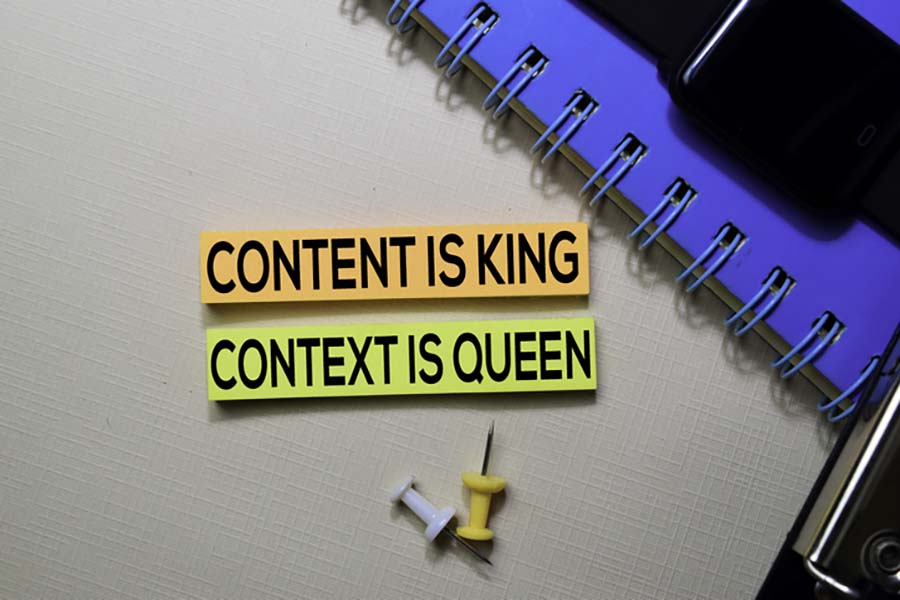In 1996, Bill Gates penned an essay where he notably coined the phrase “Content is king.” Numerous writers amplified this memorable expression adding, “If content is king, then context is queen.” Context marketing is about adding the “who, when, why, what, and how” dimension to what you’re writing or saying to differentiate and connect with your target audience. To help you craft your main messages, watch this video tutorial.
Applying for a job, interviewing, and preparing your materials to stand out is a strategic undertaking. You need to put yourself in the shoes of recruiters and hiring managers. If you were them, what would they want to hear from you? For example, what can you highlight that would give them confidence that you’re the right fit? By thinking this through, you can tailor your information to match. In a recent CNBC article, they shared some noteworthy stats:
- 84% of recruiters are in the process of adapting their hiring processes to facilitate remote exchanges
- 58% of those recruiters are using social media networks like LinkedIn, Facebook, and even Instagram to connect with potential hires
- Many recruiters are using videoconferencing to screen and interview candidates, as well as text messaging to connect with candidates
As you’re waiting for that call or text, here are five ways to apply your distinct messaging to make yourself stand out:
1. Create a list of relevant applications to update.
Make a list of how you can present your messaging in a way that inspires, informs, and engages others. Once you have the list, go through each one to update the content in a consistent approach to showcase your personal brand. In addition to the essential resume and cover letter, my go-to career materials include a positioning/value statement, elevator pitch, and electronic portfolio that exemplifies my interview case studies and stories.
2. Craft your value and positioning statements.
These statements are an expression of how you’re a perfect fit for the role. They include what you offer and how it differentiates you from other candidates. A value proposition is a broader statement, a big picture overview. In contrast, a positioning statement presents the skills you bring to the role and defines what makes you unique and why it’s relevant to the particular job.
3. Write your elevator speech.
In 30-60 seconds, can you answer the question, “Can you tell me a little bit about yourself? or “What interests you in this position?” An elevator speech, also referred to as a pitch or statement, defines who you are, what you do, and what interests you. The idea is that you can keep it brief enough for an elevator ride. Your answers should include a quick synopsis of your background, experience, and expertise.
4. Upgrade your LinkedIn Profile and Portfolio.
In addition to your resume and cover letter, you should ensure your LinkedIn profile is active and up-to-date. This includes reviewing existing content and making sure your information on the backend is accurate and visible to recruiters. A great LinkedIn resource is this book by Wayne Breitbarth. In terms of your portfolio, this is about visually showing your accomplishments. PowerPoint is a great way to document your stories. You should be able to share your stories in 3-5 minutes. Your talking points should be: the situation to set the context, what the overall objective was, your strategy to accomplish, the tactics you took, and how you measured the success of the task or project. Recruiters and hiring managers will also want to hear how you’ve overcome obstacles, handled rejections, as well as lessons learned along the way.
5. Practice, practice, and practice your personal presentation.
Present your stories and case studies in a consistent and compelling manner throughout varied applications. If using online video applications, such as Zoom, are new to you, I suggest that you dedicate time practicing with a trusted friend or significant other. How you come across on video, phone, and in-person will be different. You want to master all three. This includes your body language, stance, facial expressions, gestures, eye contact, and tone of voice.
For more information on these topics, you can read “Find Your Voice” and “Build Your Brand Identity” articles. Advancing yourself through online training or coaching, which can be a tax write-off dependent on where you live, is worth the investment to secure your next job.

